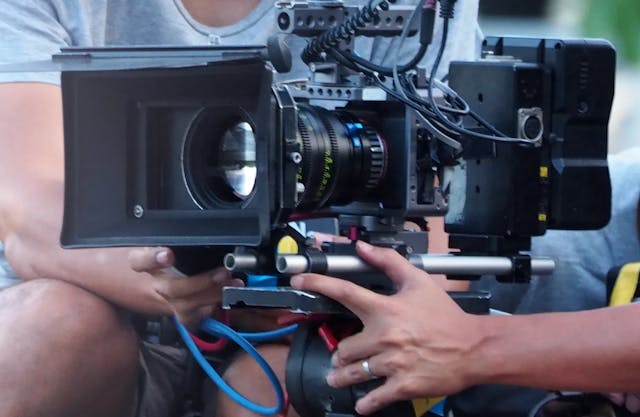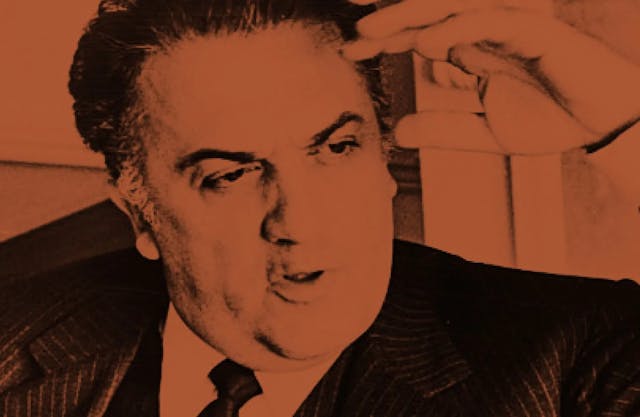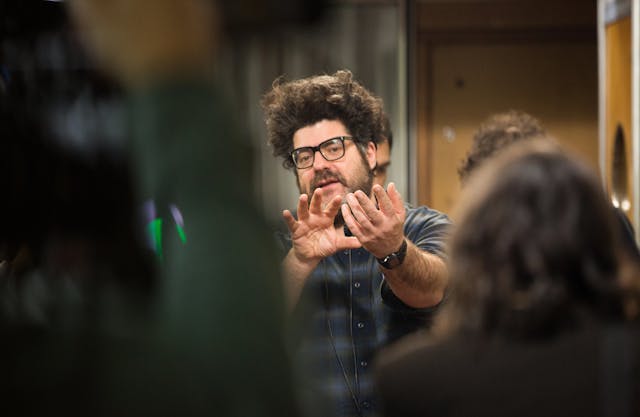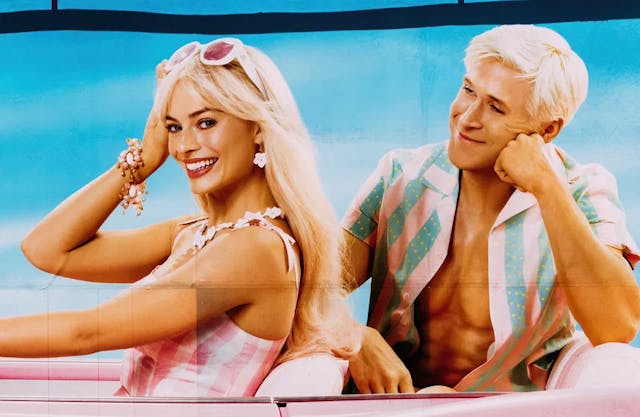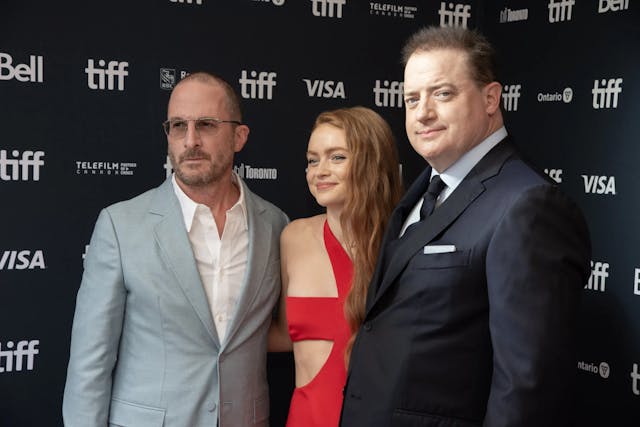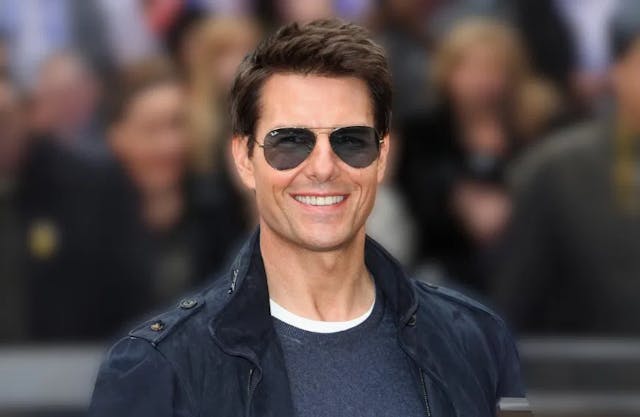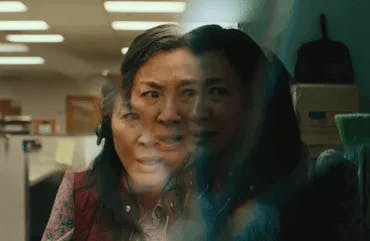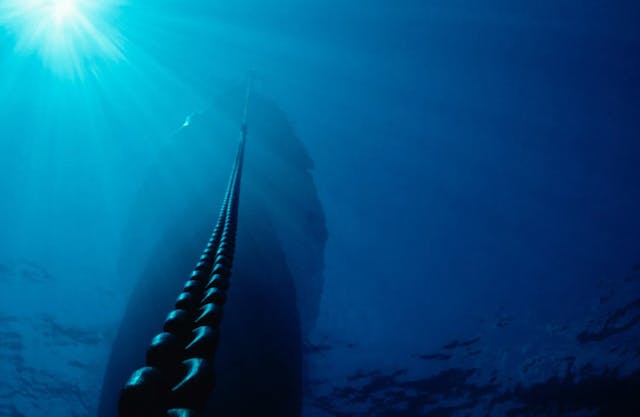The Best Crime Movies That You Have to Watch Right Now!
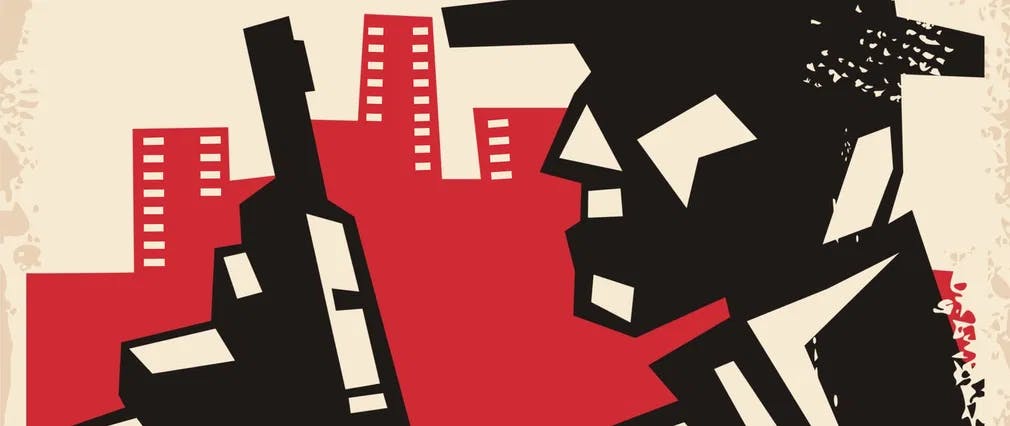
They say crime never pays, but it sure as hell entertains. No wonder filmmakers everywhere have noticed people misbehaving since the medium's dawn. It's hard to define the contours of crime movies as a genre. It's more of a plot theme that can play as either drama, tragedy, or comedy, sometimes changing register from one scene to another or finding a spot in between. It can be thoroughly modern or enclosed in the trappings of a period piece. At heart lies our unending fascination with human folly.
It is impossible to make a definitive list of crime movies. Think of this list as suggestions that will liven up your watchlist. If you dig physical media, you might want to clear a shelf to make space for these movies. Most of them are available in home video. These are just the best crime movies that come off the top of my head. Hitchcock is just too damn easy, so he's off-limits. I'm not above updating this shortly. As soon as I push "publish," an egregious omission will manifest. Or many!
The American Pioneer
The Great Train Robbery (1903)
American film pioneer Edwin S. Porter began his film career as a projectionist but soon gravitated toward the creative side of the camera. He wrote, directed, and shot many short films, including the influential “The Great Train Robbery.” The title says it all: a gang of assailants steal money off a train, only to find a group of fearless lawmen hot on their trail. This early Western is a marvel of cinematic innovation, using cross-cutting editing to connect simultaneous activity and establish temporal and spatial continuity. It also features a striking shot of a robber pointing its gun at the camera, that is, the audience. It’s hard to say anything is “the first” in film history, but in this case, we can say this is the most powerful close-up ever.
European Bad Behaviour
Les Vampires (1915)
This early serial by Louis Feuillade is an epic story about a gang of master criminals terrorizing early-XX Century Paris. They infiltrate the government and good society. They steal and murder mercilessly. Their sole motivation seems to create havoc. Sure, a fearless journalist is out to get them, but you can feel the sympathy lies squarely with the bad guys and one special evil gal. Irma Vep, as played by one-name wonder Musidora, is a sex bomb that will give you the vapors well in the XXI Century. You might surprise yourself by binging the ten episodes, which add up to more than seven hours of pure, undiluted fun. Nobody drinks blood, but it qualifies as an old vampire' movie!
Mabuse, the Gambler (1922)
Based on the novel by Norbert Jacques, Fritz Lang gave us an arch-criminal for the ages. Dr. Mabuse aims to lead the Berlin underworld, using his psychology skills, penchant for disguises, and overall ruthless nature. He commands a small army of minions and henchmen who do his bidding with zealousness. Like “Les Vampires,” this is a compulsively watchable yarn perfect for introducing newcomers to the silent cinema. Lang would return to the character for “The Testament of Dr. Mabuse” (1933), taking advantage of the novelty of sound, and “The Thousand Eyes of Dr. Mabuse” (1960), which turned out to be his final film.
Golden Age Hollywood Malfeasance
Scarface (1932)
Alcohol prohibition may have been a godsend for the temperance movement, but it proved a boon for criminal activity, sowing the seeds of the classic American Gangster. Howard Hawks directs this adaptation of a sensational novel by Armitage Trail, loosely based on the rise of true criminal Al Capone. Produced before the Hays Code came into force, the movie is sensual and violent in ways eventually filtered out of studio pictures. Still, the powers that be feared the movie glorified violence, and a new ending was shot to appease detractors. Paul Muni is scalding as Antonio “Tony” Camonte, an Italian immigrant who will stop at nothing to conquer the Chicago underworld. Ann Dvorak is his duplicitous sister with an agenda of her own. It was remade by Brian De Palma in 1983, transplanting the action to early ‘80s Miami and making the character a Cuban immigrant, played memorably by Al Pacino.
Trouble in Paradise (1932)
This is a prime example of a Golden Age romantic comedy, coming from the best director of the genre, Ernst Lubitsch. The action takes place among glamorous expatriates in Venice, Italy. Herbert Marshall is a jewel thief posing as a baron, joining forces with pickpocket Miriam Hopkins to con the heiress of a perfume fortune, played by Kay Francis. Much to their surprise, they end up tangled in a love triangle. A prime example of “The Lubitsch Touch” is his sophisticated, light-handed way of setting up romantic conflict and resolving it without compromising the character’s humanity. Delightful doesn’t begin to describe it. His biting wit is always shining. Check out how your first sight of glamorous Venice is a gondolier who happens to be picking up the trash.
Angels With Dirty Faces (1938)
James Cagney was a versatile performer. He won an Oscar as a song-and-dance man in “Yankee Doodle Dandy” (1942), but his best performances find him channeling his inner thug. In this movie, directed by a pre-“Casablanca” Michael Curtiz, Cagney plays Rocky Sullivan, an ex-convict who returns to his old neighborhood and gets into a power struggle with his old friend, the straight-arrow Jerry Connolly (Pat O'Brien). Now a priest, Jerry tries desperately to protect a gang of kids from getting seduced by the dark side Rocky represents. The movie scored three Oscar nominations, including Best Actor for Cagney.
AMERICAN FILM NOIR
Phantom Lady (1944)
German director Robert Siodmak directs this unlikely film noir, centered not on a tormented detective but on a smart and driven female character. Ella Raines is a devoted secretary, going to dangerous extremes to prove her beloved boss (Alan Curtiss) did not murder his wife. Time is of the essence because the man is on death row, and his alibi falls to pieces when none of the persons he encountered on that fateful night remember seeing him. Raines is a good girl, but the atmosphere is bawdy and intoxicating. Check out a wild, sexy, menacing scene in a jazz club where the band goes wild. The fantastic cinematography is by Elwood Bredell.
Double Indemnity (1944)
Not all noirs were low budget films. Billy Wilder directed this luscious film noir, collaborating on the script with Raymond Chandler, based on the novel by James M. Cain. That is like an all-star team of vicarious criminality. Fred McMurray stars as an insurance salesman roped in by an unsatisfied wife to kill her husband. They will keep the money from his life insurance policy and live happily ever after. Or so he thinks. Barbara Stanwyck is aces as a temptress with a penchant for ankle bracelets. Edward G. Robinson is the film’s conscience, playing the fall guy’s boss. The movie took 7 Oscars nominations, including Best Picture. It did not win anything, but then again, it’s not like it needs it to take its place in the pantheon of classic crime films.
The Big Heat (1953)
Alright, we need to root for good guys sometimes. You will be rooting for Glenn Ford as Sargent Dave Bannion, the hero in this labyrinthical thriller directed by Fritz Lang. When a fellow police officer kills himself, Bannion discovers a complex plot of murderous corruption, connecting organized crime with the avatars of law and order. Neither he nor anybody he loves is safe. For all the sympathy he gathers, Gloria Grahame walks away with the movie as a gangster moll with a very inconvenient conscience. A car-bomb murder makes an impressive explosion, but the hot coffee scene is more shocking.
WORLDWIDE POST-WAR CORRUPTION
Japan
Rashomon (1950)
The movie that introduced Akira Kurosawa to the world is a fascinating period piece documenting the aftermath of the rape of a bride and the murder of her husband from the conflicting points of view of four people involved: a bandit, the woman, the lumberjack who discovered the crime scene, and even the dead man, through a female medium. Their conflicting testimonies take away layers of lies but never quite get to the truth. Or do? The title refers to an old city gate, where secondary characters reunite under the rain to retell the story, adding another unreliable narrator to the characters directly involved in the criminal events. The movie is so powerful that the word Rashomon entered pop culture to describe a situation where truth is impossible to define. The movie won an honorary Oscar in 1952 before the Best Foreign Film award was institutionalized. It also took the Golden Lion for Best Film at the Venice Film Festival.
High and Low (1963)
Another Kurosawa masterpiece. In modern Japan, class struggle meets criminal procedures when a shoe-manufacturing businessman (Toshiro Mifune) receives a call from kidnappers who claim to have his son. It takes a while to realize that they are wrong. They took his chauffeur’s kid. This happens during a contentious company takeover, adding stress to the situation. Tatsuya Nakadai is Inspector Tokura, designated by the police to solve the case. This is a tense, taut, ethical thriller filmed in glorious black & white.
France
Diabolique (1955)
A boarding school in rural France is the stage for a toxic love triangle between an abusive headmaster, Michel (Paul Meurisse), his delicate wife, Christina (Vera Clouzot), and his lover, sultry Nicole (Simone Signoret). Far from a catfight, the women gang up and devise a plan to kill the man. Once they drown the drugged guy, things fall apart quite quickly. Henry Georges Cluzot’s thriller was based on a novel by Pierre Boileau and Thomas Narjerac that Alfred Hitchcock himself wanted to bring to the screen. If the names ring a bell, it’s because they also wrote “From Among the Dead,” which served as the basis for Hitch’s classic “Vertigo” (1958). The movie was remade in 1996 with Sharon Stone and Isabelle Adjani in the lead roles, to dismal effect.
Rififi (1955)
Jules Dassin's movie sets the blueprint for serious-minded caper films to follow. By now, you know the drill. An ex-con fresh out of jail gets roped in into a big hit. He assembles a team of idiosyncratic skilled robbers who put their lives on the line to pull the heist off. Tony "Le Stephanois" (Jean Servais) wants the money to pry his ex-girlfriend Mado (Marie Sabouret) from the claws of a violent gangster. So far, so expected. But Dassin makes his crime opus transcendent when he shoots and edits the actual robbery of a jewelry store safe to create a sequence akin to real-time, without dialogue or music. It takes 32 minutes and earned this movie the status of a classic. Crime documentaries would be lucky to display such amazing skills. As much as one enjoys the display of criminal ingenuity, you feel in the pit of your stomach that things will not go right. And they don't.
Le Samourai (1967)
A precursor to the French New Wave, director Jean Pierre Melville was obsessed with Film Noir, and it shows. His best movies deal with gangsters, cops, and robbers, enmeshed in tragic battles of will over crime and punishment. Exhibit A: this late masterpiece. Alain Delon gets a signature role as a stoic contract killer who becomes a target when a routine hit goes awry. This is a beautiful fusion of American crime mores and French sophistication. When you think the movie is too cool to care about anything, it closes with an emotional gut punch.
Latin America
The Criminal Life of Archibaldo de la Cruz (1955)
Mischievous Spanish director Luis Buñuel went into exile after stepping on the toes of the Francisco Franco dictatorship with his fiendishly clever surreal social satires. After an uneventful season in Hollywood, he found a home in Mexico and worked as a director for hire in the local industry. It was the waning days of its Golden Age. Most of these movies might not have the power of his late-stage masterpieces, but they are clever and irresistibly perverse. Case in point: this black-hearted comedy is about a well-to-do bachelor (Ernesto Alonso) obsessed with killing women ever since he saw his governess killed by a stray bullet as a child. He fantasizes about committing murder and goes as far as threatening people, but they mostly end up dying by contrived and surprising twists of fate. You may call this a comedy of almost-criminal errors. Also known as “Rehearsal for a Crime.” The preoccupation with unsatisfied desire resonates in later works, like “The Exterminating Angel” (1962), about a party of aristocrats who can’t leave their hostess’ study, and “The Discreet Charm of the Bourgeoisie” (1972) about a group of friends whose plans to eat together get constantly derailed for increasingly ludicrous reasons.
The Bitter Stems (1956)
It’s fascinating to see the tropes of such an American genre as film noir transplanted to a different culture. This merciless drama takes place in post-WWII Argentina, where an influx of immigrants from war-torn Europe brought resentment to a country in a permanent economic crisis. Alfredo Gasper (Carlos Cores) is a down-on-his-luck reporter who joins a Hungarian immigrant, Liudas (Vassili Lambrinos), on a fraudulent ploy to establish a Journalism School by mail - imagine, once Journalism was so promising that such a thing would be feasible enough to fool people into sending money. Everything seems to go well until Alfredo suspects his partner-in-crime is playing him for a fool. We went long over this one for last year’s Noirvember.
SWINGING SIXTIES CAPERS
Topkapi (1964)
Think “Rififi,” but strive for laughs. Not content with that moody, stark black-and-white masterpiece, Jules Dassin goes for colorful sophistication in this epic tale about an international group of thieves who come together to steal a legendary jewel-encrusted dagger from an Istanbul museum. Maximillian Schell and Melina Mercouri have insane chemistry as the gang leaders. Peter Ustinov’s deliciously bumbling accomplice earned him a Best Supporting Actor Academy Award. Think of this as a mirror image of “Rififi,” but candy-colored, warm and funny.
After the Fox (1966)
Vittorio De Sica goes for screwball comedy instead of neorealist drama. Peter Sellers stars as Aldo Vanucci's "The Fox," the leader of a bumbling gang of thieves who pretend to be a film crew shooting a heist film at a small Italian sea-side town, to sneak out of the country an actual fortune in gold bullion. Victor Mature is the decadent Hollywood star fooled into starring. Britt Ekland is the beautiful local girl "discovered" and renamed with the artistic name "Gina Romantica." It is sillier than you think, proving that neorealist master Vittorio de Sica could also deliver jokes. You'll wish he had done the movie-within-a-movie "The Gold of Savaglio."
AMERICAN NEW WAVE
The Friends of Eddy Coyle (1973)
Robert Mitchum found a heart-breaking late-career job as a gunrunner trapped in a double-crossing plot with a bank-robbing gang, the police, and a secret informant. Peter Yates invokes the seedy Boston underworld. Forget the glamor of easy money, this is a desperate lot of people hanging on to life by the skin of their teeth. Still, once the score gets in motion, the action is as pulse-pounding as any commercial thriller. Based on the novel by George V. Higgins.
Chinatown (1974)
A Golden Age film noir retreat in luscious color, director Roman Polanski enrolls Jack Nicholson as Private Detective J.J. Gittes, uncovering a twisted plot against the most precious resource in booming ‘30s California: water. The action jumpstarts when Gittes receives a woman named Evelyn Mulwray. She wants him to find his missing husband. It sounds straightforward until another Evelyn Mulwray (Faye Dunaway) knocks at his door, threatening a lawsuit. This is just the first twist in a classic homage, just as good as the films from yore that inspired this crackerjack creative team. Screenwriter Robert Towne won the Oscar for Best Original Screenplay. It was the only one the movie took out of 11 nominations.
Dog Day Afternoon (1975)
The legendary Sidney Lumet, who passed away in 2011, became the internet’s lead character of the day a few weeks ago. An unsuspecting poster, perhaps unaware of his celebrated filmography of 74 titles and 5 Oscar nominations, lamented the film pro was “unsung.” Algorithms blew up the comment, writing another chapter of Tragic Moments in Film Twitter History. One can only welcome the controversy if it brings new viewers to classics like “Dog Day Afternoon.” This picaresque, ultimately tragic movie is based on a true story covered in a Life Magazine article. Al Pacino is a hapless robber holding up a bank to get money to pay for a gender-transitioning surgery for his girlfriend. The hit quickly escalates into a hostage situation. Live TV turns the man into a folk hero as the summer heat of Brooklyn rises. Frank Pierson won a Best Adapted Screenplay Oscar out of six nominations.
‘80s EXCESS
Thief (1981)
Before Michael Mann gave us the landmark TV series “Miami Vice” (1984-1989), he made his feature film debut with this character study about a professional thief flirting with and failing to achieve respectability. James Cann, in a towering performance, is Frank, a used car salesman whose true calling is safe cracking. Just as he finds a potential wife in Jessie (Tuesday Weld), he plans one last hit to set him up for life. But things never go as planned, and he ends up crossing crime boss Leo (Robert Prosky), who seems to have everything Frank wants. The robbery sequence is a clear homage to “Rififi,” dipped in the cold colors of the night, which has become a recurrent style motif in his films. Tangerine Dream provided the now classic synth-heavy music score.
Once Upon a Time In America (1984)
Sergio Leone took all the lessons he learned making spaghetti westerns and applied them to this epic retread of gangster films. The movie follows a group of friends who grow up in the immigrant tenements of New York and graduate from childish petty crime to outright mafia activity during the prohibition. In a colossal triumph of casting, the young actors and their adult counterparts are so similar that you think they are the same person. Robert De Niro and James Wood sink their teeth in the lead roles. Treat Williams, William Forsythe, and Elizabeth McGovern give magnificent support. Make sure to see the original Director’s Cut, which runs for almost 4 hours.
The Untouchables (1987)
No remake of a dusty ‘60s TV series has the right to be as fun as Brian De Palma’s reinvention of “The Untouchables.” Come for Kevin Coster, Sean Connery, Andy Garcia, and Charles Martin Smith as the gang of strong-armed law enforcers, but stay for Robert De Niro’s over-the-top turn as Al Capone. Extra points to Billy Drago for the scary henchman-in-white Frank Nitty. Sean Connery got one of those Best Supporting Actor Oscars that supply for a lifetime of neglect from the Academy. The music by master Ennio Morricone will live rent-free in your head forever. Darn! I’m hearing it now, myself.
LATE XX CENTURY ANXIETY
Heat (1995)
Michael Mann’s cops-and-robbers epic became a milestone by having Robert De Niro and Al Pacino acting together for the first time - in “The Godfather: Part II” (1974), they were never onscreen at the same time. Each group receives equal weight and consideration. The movie keeps the genre's machismo in check, amplifying its scope and contemplating the men's relationships with wives, girlfriends, and daughters. Case in point: Ashley Judd. Fresh out of her indie debut in “Ruby In Paradise,” she plays Val Kilmer’s girlfriend. Once the chips fall where they may, she gets a powerful, wordless scene where a single gesture encompasses a lifetime of regrets. As usual with Mann’s movies, the action sequences are amazing. I wish you could catch a big-screen revival or at least watch it at home with a decent surround sound system.
Fargo (1996)
Accusations that the Coen Brothers are cynics should lay to rest after this dark, snowbound noir about a half-assed kidnapping gone tragically awry. William H. Macy is a feeble but greedy car salesman, cowering in the shadow of his moneyed father-in-law. To even the scales, he hires a couple of goons (Steve Buscemi and Peter Stormare) to kidnap his wife. The hare-brained plan goes wrong, and gentle police detective Marge Gunderson (Frances McDormand) goes to work to sort out the mess. McDormand won a well-deserved Oscar for her steely-yet-warm performance. Forget a zealous hunger for justice, whatever that is. Her greatest gift is empathy. Staring at the bloody mess the mean unleashed, she shares the only necessary words: “It’s only a little bit of money. Don’t you know that?” We should. By God, we should.
Out of Sight (1998)
Steven Soderbergh gave us the last great crime movie of the XX Century with this irresistible caper based on an Elmore Leonard novel. George Clooney and Jennifer Lopez deliver career-best performances as a bank robber and a U.S. Marshall who can’t deny their attraction for each other as they fall into a dangerous cat-and-mouse game. His criminal gang includes Ving Rhames, Steve Zhan, and Luis Guzman. They come together to rob an annoying millionaire played by Albert Brooks. This movie is the epitome of cool. Soderbergh went on to explore more variants of the genre with druggy Oscar-winning epic “Traffic” (2000) the “Ocean’s Eleven” (2001) franchise, corporate malfeasance with “The Informant!” (2009), big-pharma shenanigans in “Side Effects” (2013), a true-crime saga inspired in the Panama Papers with “The Laundromat” (2019), the redneck love-letter of “Logan Lucky'' (2017), the classic remix on digital video of “No Sudden Move” (2022) and the new-media paranoid thriller “Kimi.” Heck, you can do a full Crime Movies Festival with this guy.
Want to get an email when we publish new content?
Subscribe today